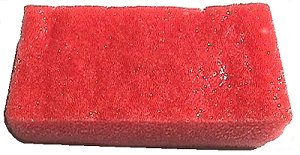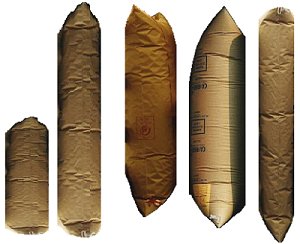 |
Expanded synthetic plastics have very poor recovery properties and nearly no elasticity. They deform very quickly under load, i.e. they become thinner under compression leads. They can therefore only be used for filling gaps with relatively light loads. In all other cases, they should not be used as a filling material. The same applies for cardboard and corrugated board.
 |
Used tires may to a certain extent be suitable for filling in gaps, but not as has been done here: Ring-shaped point loads may occur. To enable them to fill in a large area, they could be arranged so that they are pressed between two walking boards which each cover a large surface area of the cargo.
Again, we quote the CTU guidelines:
- 3.2.12 When deciding on packaging and cargo-securing material, it should be borne in mind that some countries enforce a garbage- and litter-avoidance policy. This may lead to limitations on the use of certain materials and imply fees for the recovery of packaging at the reception point as well as similar problems for the shipper of the cargo. In such cases, reusable packaging and securing material should be used. Increasingly, countries are requiring timber dunnage and packaging materials to be debarked.
 |
Airbags |
- 3.2.4 If airbags are used, the manufacturer's instructions on filling pressure should be scrupulously observed. Allowance should be made for the possibility of a considerable rise in the internal temperature of the CTU above the temperature at the time of packing. This may cause the bags to expand and burst, thereby making them ineffectual as a means of securing the cargo. Airbags should not be used as a means of filling space at the doorway unless precautions are taken to ensure that they cannot cause the door to open violently when the locking bars are released.